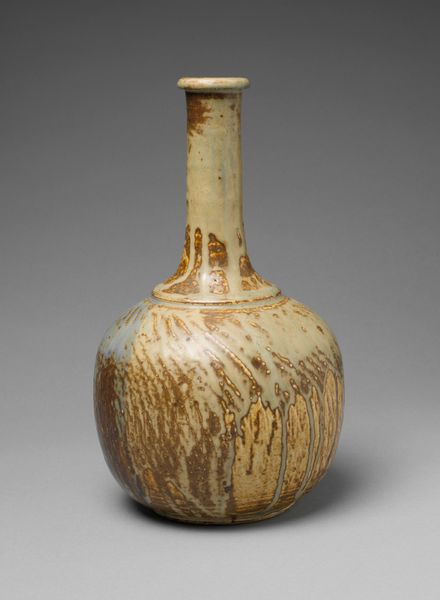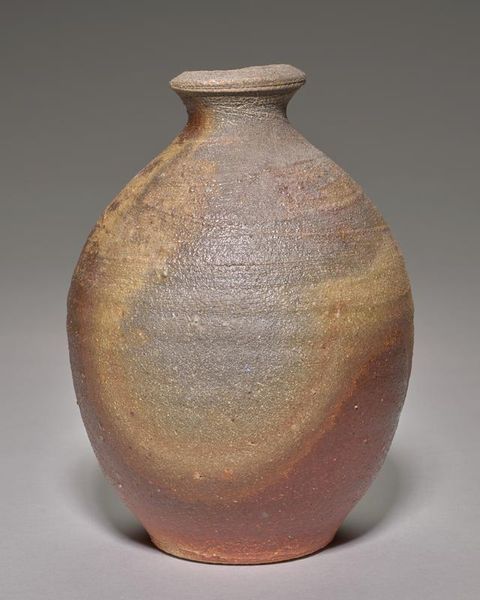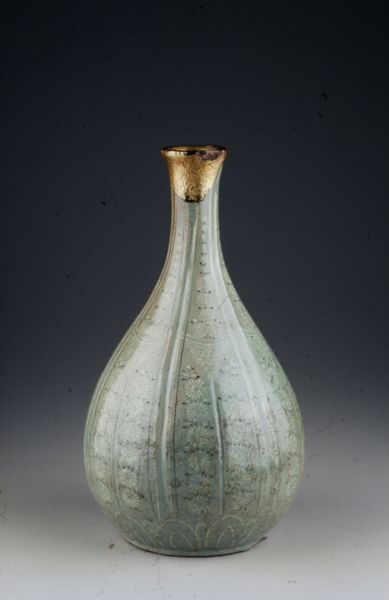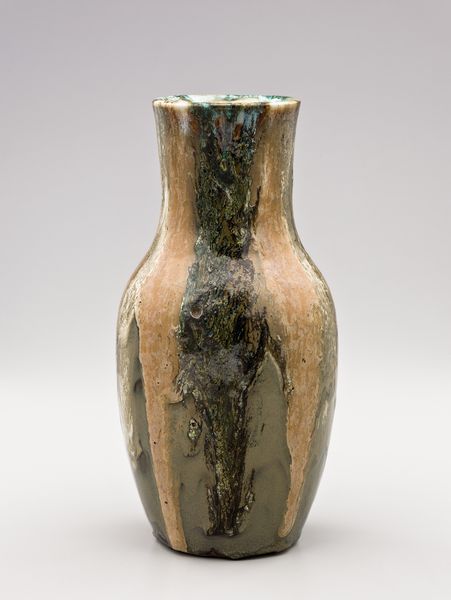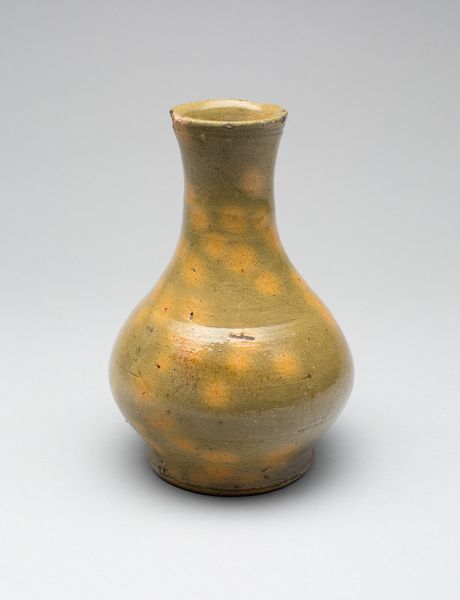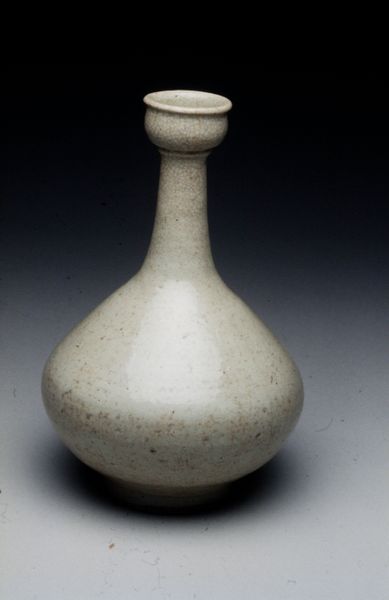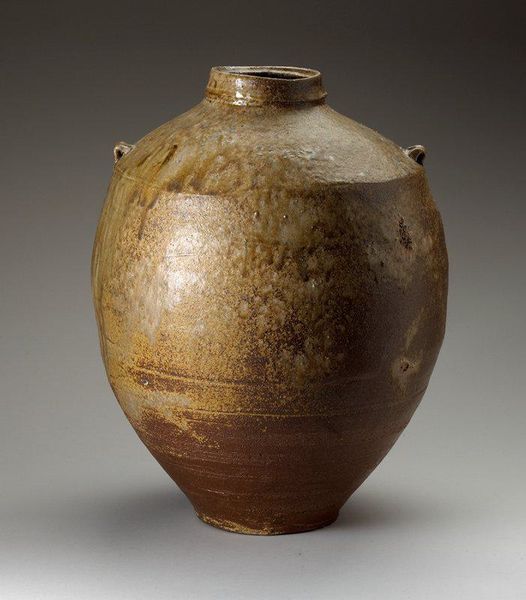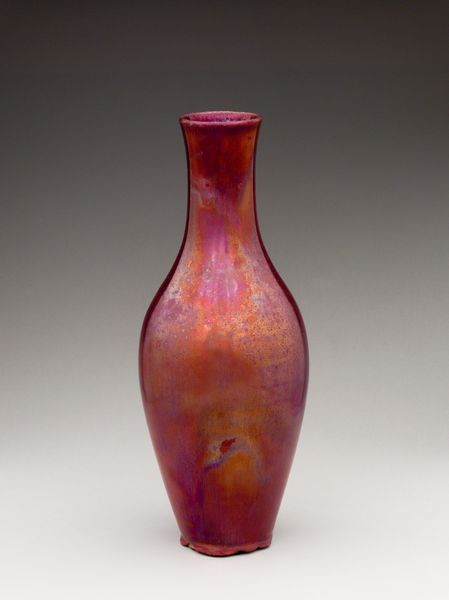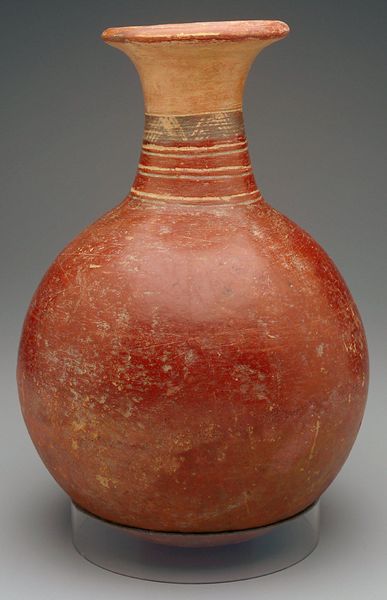
ceramic, earthenware, sculpture
#
ceramic
#
vase
#
abstract
#
earthenware
#
stoneware
#
sculpture
#
ceramic
Dimensions: 9 1/2 x 5 3/8 x 5 3/8 in. (24.13 x 13.65 x 13.65 cm)
Copyright: No Known Copyright
Curator: So, standing here at the Minneapolis Institute of Art, we’re observing a ceramic vase created by Jack Troy around 1990. It's crafted from earthenware and stoneware. My immediate reaction is its grounded elegance. The textures remind me of weathered stone. Editor: I’m getting a powerful sense of impermanence and the beauty of decay. There’s this sort of mottled quality, suggesting erosion, the passage of time, perhaps even ecological precarity with its muted color palette. Does Troy delve into those themes consciously? Curator: I wouldn’t say explicitly, but there’s always a conversation between the artist and the clay. Troy often talks about letting the kiln gods have their say. Accidents and imperfections are embraced, so the resulting piece has a unique visual record of its creation, even if a particular narrative is not spelled out directly. Editor: Right. So, embracing chance in the firing process mirrors larger philosophies about control and letting go, concepts resonating within broader societal shifts in the late 20th century regarding environmental awareness. Did he write about the environmental cost of his art practice? I’m trying to bridge that historical context and sustainability awareness. Curator: Troy has indeed engaged with issues of sustainability, looking at the relationship of a ceramic practice to responsible forestry. However, I also think this vase presents us with more simple contemplation of process and material, or even its metaphorical nature as an artifact suggesting ideas of wabi-sabi, where there is beauty to be found in imperfection. Its tactile quality almost begs for touch. Editor: Absolutely, that aligns beautifully with broader decolonial discourse too. These ideas are important for challenging traditional Eurocentric perspectives within craft histories, so considering works like these prompts crucial re-evaluations and expands art narratives to be far more inclusive. Curator: I’d never thought about it quite like that! And maybe there are other layers of interpretation. Who knows what blooms might spring out of it when we put some of these theoretical frameworks into action in our thinking. Editor: It really invites a reimagining of conventional understandings about functionality and aesthetics. These humble clay works contain stories we all could and should interpret.
Comments
No comments
Be the first to comment and join the conversation on the ultimate creative platform.
